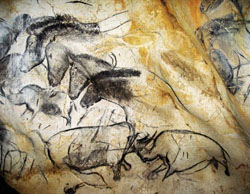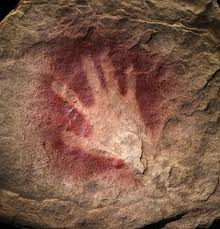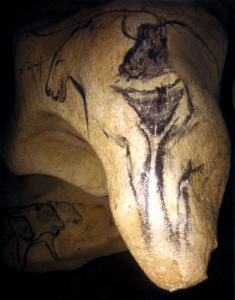Call for Manuscripts for a Special Issue of Environmental Communication: A Journal of Nature and Culture, Volume 6, Issue 4 (December, 2012)
Visual Environmental Communication
Editors: Anders Hansen (University of Leicester) and David Machin (University of Cardiff)
While there is a growing body of research on media coverage of the environment deploying a
range of text focused approaches, there has not been a corresponding body of work on visual
environmental communication. Yet, just as we can describe the way that environmental discourses
are signified in texts through lexical and grammatical choices so too do we need to look at the visual semiotic choices that realize these in images. Like language, images are used to promote
particular interests and ideologies, particular versions of events and issues through particular
semiotic choices and combinations. If we wish to understand the media discourses that might shape
public and political perceptions of nature, the environment and green issues we must also
understand how these discourses are realized visually.
It has long been recognised in academic research that perceptions of nature and of the environment
more generally are socially, politically and culturally constructed and that the visual plays
a key role in this process. And it is accepted that historically specific constructions and
visual representations of nature are used – and serve ideologically – to authenticate and promote
particular arguments and positions in relation to everything from public debate about science,
health and the environment to advertising and marketing of products, locations/tourist
destinations, politics and business/corporate images. In light of the long pedigree of these
discussions it is surprising that few studies have taken a closer look specifically at the
visual aspect of environmental communication.
Recent studies, which have looked at the visualisation of climate change and the
environment in the media, have noted variously the decontextualization and aestheticization of
landscapes or physical settings, the inscription of advertising and other media images of nature
and the environment into the romantic tradition of landscape images, the use of a standard range
of symbolic and iconic images to represent a global environment under threat, the ideological
construction of ‘pristine’ environments, and the provision of commercial image archives designed
specifically to take advantage of climate change as a marketing opportunity. The indication is
that the environment is visualized through the use of increasingly symbolic and iconic images
rather than those which are recognizable because of their geographic/historical/political or
socially specific identity. Through their repeated use these images replace other possible
representations, particularly those that locate and connect such issues in actual concrete
processes such as global capitalism and consumerism. This collection focuses on analysis of the visual
representation the environment and on the politics of visual environmental communication.
Call for Manuscripts
This call for manuscripts invites empirical research and critical essays on Visual
Environmental Communication. Priority is given to submissions that draw on and offer analysis of
concrete visual representations rather than those with a more theoretical or interpretive focus. Topics may include:
· The visualization of climate change and other environmental issues in news media (television, press or web-news)
· Visualization in promotional/political/campaign communications on the environment (this may include analysis of visual strategies in business/corporate environmental communication, government/local government environmental communication, pressure group/NGO environmental communication).
· The use of nature and environment imagery in advertising and marketing
· Intercultural and international differences in the visual construction of nature and the environment
· The visualization of the environment/environmental conflict in popular film and media entertainment
Manuscripts must be prepared in English, should be crafted in a clear and concise style that
avoids jargon, and should not exceed 8,000 words including references. The journal adheres to APA
Style. Manuscripts must not be under review elsewhere or have appeared in any other published
form. All submissions should use MANUSCRIPT CENTRAL, accompanied by a cover letter indicating
the desire to have the submission reviewed for this special issue. For further details on
manuscript submission, please refer to the “Instructions for authors†on the journal’s website (http://tandf.co.uk/journals/renc or http://www.informaworld.com/renc). Upon
notification of acceptance, authors must assign copyright to Taylor and Francis and provide
copyright clearance for any copyrighted material.
Manuscripts should be submitted by 30 November
2011. Contact Anders Hansen at ash@le.ac.uk with questions.
Please disseminate this call to any colleagues who might be interested.
…Or so says the conservative website Resisting the Green Dragon, which features a series of films “explaining” how environmentalists are essentially the cause of government control of our lives and mind control of our children. Films like Avatar are apparently the worst (see a Resisting the Green Dragon clip on Good Magazine).*
The tragedy of such rhetoric is its refusal to engage with the pluralism of environmentalism, or the pluralism of Christianity. I wonder where they’d place the pope since he seems to support climate change initiatives. They also seem to ignore James Cameron’s statement on the fight for indigenous peoples against government control.
*Thanks to Neal, an undergraduate, who sent me the Good Magazine link.
The spread of widely accessible web authoring networks has changed the course of the ecological turn in writing studies, such that ecological approaches to writing and rhetoric now tend toward the territory of ecomedia studies (see Collin Brooke’s Linqua Fracta for a leading example). The first compositionists to evoke ecology did so well before the rise of Web 2.0; indeed, ecocomposition has been an established subfield for at least the past decade. Sidney Dobrin and Christian Weisser’s Natural Discourse, the first book-length account of ecocomposition, positions composition and ecology in a symbiotic relationship when it tests, for example, the potential for thinking about questions of genre according to the logic of ecosystems. The more “group-breaking†passages of the book, however, occur not when discourse is thought in terms of environmental ecological, but rather when ecology—as a generalized mode of thought—inspires relational, systemic ways of approaching writing on its own terms. Such passages could be gathered together under what Dobrin and Weisser then called “discursive ecology,†which bears obvious resemblance to Dobrin’s forthcoming collection Writing Ecology.
Writing ecologies could be understood as a remediation of early ecocomposition that extends these early explorations into discursive ecology, while at the same time dispensing with the environmentalist overtones, which tended to turn attention away from the complexities of scenes/acts of writing. Turning now to complex ecology, Dobrin has recently called for and already initiated a remedial treatment of ecocomposition, acknowledging that, in he and Weisser’s earlier definition of ecocomposition, the discourse of environmental(ist) ecology was “often addressed in place of writing.†As such, ecocomposition has failed to distinguish ecology from environmentalism—much of what we’ve called ecocomposition can be more accurately described as environmentalist composition. As ecocompositionalists single out Nature over and apart from other, “non-natural†environments, they are actually contradicting the ethos of interconnectedness or relationality that is the lifeblood of ecological thought. Moreover, the conventions of ecocomposition indicate a need to engage more thoroughly with ecological theory beyond the metaphors and allusions characteristic of the symbiotic mode, which drove early work in ecocomposition like Composition and Sustainability and Ecocomposition: Theoretical and Pedagogical Approaches.
One aspect of Natural Discourse that remains quite suggestive, however, is the link drawn between ecological thinking and hypertextual writing. Though the connection is only developed explicitly over a few pages, Dobrin and Weisser maintain a resolute focus on how networked computing environments invite (if not demand) an ecological perspective toward electronic/digital writing. Unlike many other passages in the book, the ecology that they invoke here is an ecology without nature (to borrow Tim Morton’s phrase); that is, “webbed writing†becomes articulated as an ecological phenomenon, whose significance is measured not in terms of environmental activism or Nature thematics, but in terms of rhetorical affordances, with particular emphasis given to grammatological questions of circulation and interactivity. Again, while they do not pursue the question extensively, Dobrin and Weisser suggest that the digital medium will become an increasingly vital site for ecocomposition in the future: “we see computer environments, cyberspace, and hypertextual discursive locations as ripe for ecocomposition to explore†(Ecocomposition 174).
Photographer Douglas Gayeton has kindly provided the following update on his current project: The Lexicon of Sustain Ability:
“Words are the building blocks for new ideas. They have the power to activate change and transform societies. For the past year we have conversed with the foremost practitioners of sustainability in food and farming. They have shared their insights and experiences … and contributed their words to our rapidly growing Lexicon of Sustain Ability. To spread their knowledge our photography project has grown to include short films, study guides, traveling shows, a book and lastly a website where people can add their own terms to this ever-evolving lexicon.”
“In the spring of 2009 Douglas Gayeton and Laura Howard-Gayeton hired researchers and assembled a Lexicon featuring terms from 13 different areas of sustainability, from air to water, manufacturing to conservation, food to farming, energy to architecture and health to spirituality. The initial idea was to publish these terms in a book along with selected photographs by Gayeton.
However, the Lexicon quickly grew to over one thousand entries. In many cases these terms were submitted by the individuals or organizations which had coined or best represented what a term meant. Often, competing definitions of the same terms were included.
Given the vast amount of information the team assembled, the decision was made to rethink the project, and expand the INITIAL BOOK IDEA to include:
SHORT FILMS: a series of 26 video shorts, one definition per each 2-3 minute episode, to run on-air as an interstitial series, stream online as webisodes, and possibly be combined into a long form video project.
ONLINE SOCIAL NETWORK: a dedicated online community where members can add new terms to the lexicon using a wiki-like interface, debate existing definitions, or sign up to receive daily blasts of new lexicon entries.
TRAVELING PHOTOGRAPHY SHOW: a traveling exhibit featuring a lecture series, films, photography, and special guests.
To learn more about the project, and to find out how you can be involved, write us at words@thelexicon.org.”
Introducing … The Lexicon of Sustainability from the lexicon of sustainability on Vimeo.
I live in the Hudson Valley, where fracking (hydraulic fracturing) is a much debated issue and the source of much activism. For those of you who use Gasland to discuss fracking with students, here is a “fracking song” that might be of interest. It’s quite clever.
MY WATER’S ON FIRE TONIGHT
2:33 minutes on YouTube:
I just watched Herzog’s 3-D Cave of Forgotten Dreams, although I opted not to see in 3D. In 1994, three speleologists found the cave that had been hermetically sealed for 20,000 years by a fallen rock face. Named Grotte Chauvet, after one of the discoverers Jean-Marie Chauvet, the cave contains 32,000 year old perfectly preserved paintings of horses, bison (in Europe?!), lions (the males had no manes back then!), panthers, bears, owls, hyenas, rhinos, and some abstract symbols. Whoever painting these images (the “artist,†as Herzog repeatedly likes to refer to him/her), and for whatever purpose, worked with the contours of the cave’s walls expertly, and even to suggest the illusion of movement (a kind of “proto-cinema†says Herzog).
There are also several red handprints at the entrance to the cave and deeper into it. They seem to belong to someone with a crooked pinky finger, the reason why we can conclude both sets of prints came from the same person. Is he (or she, although in the film scientists and filmmaker alike unproblematically refer to a “he,†until someone calls them on it) beckoning us, guiding us, or perhaps warning us not to enter? I would have liked to know the nature of the red paint (blood?), but the film does not speculate on this, at least that I can remember.


There are no human figures, with the exception of one in one of the deepest areas of the cave: what looks to be a human/animal hybrid figure, a woman from the pubic triangle down to the legs, with a bison head. Or, perhaps woman and bison are superimposed on one another to suggest some kind of spiritual connection, as they seem to share a leg and the head of the bison seems to be overlaid on her belly. The paintings, and this one in particular, invite contemplation about the human/nature connection, which Herzog freely indulges in, including in a strange postscript to the film featuring albino crocodiles (I don’t want to spoil it for those who have not seen it). As Jean Clottes, the scientist who conducted the verification visit when the cave was discovered, posits: “The paleolithic world was suffused with fluidity and permeability . . . . there were no barriers between man and animal.â€
As is to be expected in response to such a discovery, Herzog, the scientists and art historians involved in the study of Chauvet, and I, cannot help but indulge in the construction of narratives and projections about these images, in an attempt satisfy what is perhaps a universal human need for meaning. As I contemplate the possible meanings of and reasons for these images, I note the striking contrast between the ubiquity and visibility of images today, and the care with which the images in Chauvet seem to have been drawn and kept hidden. There is no evidence that humans lived in the cave (no human bones were found, but there were plenty of bear bones and skulls).
And in searching for meaning, of the paintings, of Herzog’s film, of what it means to represent, I recall a passage in Herzog on Herzog where, like the red handprints, Herzog may be beckoning us and pointing the way:
“I have often spoken of what I call the inadequate imagery of today’s civilization. I have the impression that the images that surround us today are worn out; they are abused and useless and exhausted. They are limping and dragging themselves behind the rest of our cultural evolution. When I look at the postcards in tourist shops and the images and advertisements that surround us in magazines or I turn on the television, or if I walk into a travel agency and see those huge posters with that same tedious image of the Grand Canyon on them, I truly feel there is something dangerous emerging here.
[. . . ] As a race we have become aware of certain dangers that surround us. We comprehend, for example, that nuclear power is a real danger for mankind, that over-crowding of the planet is the greatest of all. We have understood that the destruction of the environment is another enormous danger. But I truly believe that the lack of adequate imagery is a danger of the same magnitude. It is as serious a defect as being without memory. What have we done to our images? What have we done to our embarrassed landscapes? I have said this before and will repeat it again as long as I am able to talk: if we do not develop adequate images we will die out like dinosaurs [. . .]
We need images in accordance with our civilization and our innermost conditioning, and this is the reason why I like any film that searches for new images no matter in what direction it moves or what story it tells. One must dig like an archaeologist and search our violated landscape to find anything new. It can sometimes be a struggle to find unprocessed and fresh images.â€
http://movies.nytimes.com/2011/04/29/movies/werner-herzogs-cave-of-forgotten-dreams-review.html
http://www.slate.com/id/2292498/
http://www.showcaves.com/english/fr/caves/Chauvet.html
Happy to report that the special issue of Environmental Communication: The Journal of Nature and Culture, which is devoted to interdisciplinary perspectives on cinema, new media and just sustainability is now available.
As I write in the introduction, the possibilities of theoretical and practical intersections between environmental justice and media scholarship are many and demonstrate a growing scholarship, some of which is represented in the journal’s varied articles, which can be accessed online at Taylor and Francis’ website, and hopefully through your institutional libraries.
ISSUE 16, JULY – DECEMBER 2011
Please send your proposals to info@cinemascope.it
Deadline for proposals: June 12, 2011
Notice of acceptance of proposals by Cinemascope: June 20, 2011
Reception of articles: July 20, 2011
Max length of articles: max 5000 words
Abstract: 150 words
Language: English
In his fundamental text titled “Montage 1937â€, Sergej Eisenstein proposes the distinction between what he defines “depiction†and “image†drawing from an example of mise-encadre, a shot depicting a barricade: “if a grouping of objects aims to depict a barricade, then their disposition should be such as that their overall contours indicate an intrinsic, generalised image of what a barricade implies: struggleâ€. In other words, according to Eisenstein the sum of all the compositional elements of the barricade should be read as an image of struggle, i.e. as a generalized image of the inner content of
what is depicted. In the case of the barricade, in order to ensure the transition from the object depicted to the essence of the object, the things usually put on the top – for instance the
bakery sign – will be turned upside down. Such famous example is absolutely fitting to begin a
reflexion on how movies propose an image of the revolt:struggles, revolutions, rebellions, social disorders, furnished many times an extraordinary narrative repertoire and a gaze
inside the problems of our society. In its next issue Cinemascope wants to examine the cinematic representation of the revolt, with its political, social and human consequences.
Considering the multiple nuances of revolts projected on the screen, we welcome contributions that seek to deal with the subversion of the power structures, with the role of urban spaces and the impact on the human level (the transformation of thoughts and emotions, of actions and bodies). For a more complete cfp, please contact info@cinemascope.it.



